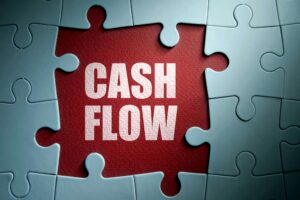
An effective manager must consider cost behavior in order to predict future costs. If the amount produced increases, the fixed cost per item decreases, and vice versa. Kristin is a Certified Public Accountant with 15 years of experience working with small business owners in all aspects of business building. In 2006, she obtained her MS in Accounting and Taxation and was diagnosed with Hodgkin’s Lymphoma two months later. Instead of focusing on the fear and anger, she started her accounting and consulting firm.

Are period costs the same as operating costs?
- Looking at the cost of products is extremely important to pricing of those products.
- For example, iron ore is a direct material to a steel company because the iron ore is clearly traceable to the finished product, steel.
- Stephanie, the production manager, is collecting data for the November budget.
- Understanding period costs is important for wise decision-making and financial management as a business owner.
Period costs are incurred to support the day-to-day operations of a business and are necessary to keep the business running smoothly. These costs are not directly traceable to a specific product or service, but rather contribute to the overall functioning of the organization. They can be further categorized into selling and marketing expenses, administrative expenses, and research and development costs. Classifying costs as product vs period costs, fixed vs variable costs, and direct vs indirect costs is crucial for financial analysis and decision-making. This classification helps businesses evaluate departmental performance, control production costs, and budget expenses. As stated earlier, period costs are items used up outside the factory, and these costs primarily go into operating expenses on the income statement.
Current Account or Saving Account: Choosing the Right Option

Carolyn VonRueden is a versatile writer with a passion for crafting engaging content on a wide range of topics. Analyzing trends in Period Costs allows stakeholders to identify cost-saving opportunities and assess cost management effectiveness. Access and download collection of free Templates to help power your productivity and performance. CFI is the global institution behind the financial modeling and valuation analyst FMVA® Designation. CFI is on a mission to enable anyone to be a great financial analyst and have a great career path.
Examples of Product Costs

Operating expenses are the funds a business pays regularly to stay in business – rent, salaries, and advertising costs, to name a few. They play a significant role in shaping the overall profitability of a business because they directly impact how much money it gets to keep after covering all these ongoing expenses. When recording period costs, it is Bookkeeping for Etsy Sellers important to match the expenses with the revenues earned in the same accounting period. This concept is known as the matching principle, which ensures that expenses are properly allocated to the period in which they contributed to generating revenue. Pay periods provide a framework for determining the effective dates of coverage changes and ensure that your premium deductions align with the chosen coverage level.
However, not all Period Costs can gross vs net be directly allocated, especially those that benefit multiple cost objects simultaneously. In this guide, we’ll delve deep into the world of Period Costs, exploring their definition, types, significance in financial analysis, methods of allocation, and strategies for effective management. Product costs are sometimes broken out into the variable and fixed subcategories. This additional information is needed when calculating the break even sales level of a business. It is also useful for determining the minimum price at which a product can be sold while still generating a profit.
- By monitoring the return on investment (ROI) from these activities, businesses can make informed decisions about their marketing strategies and allocate resources more efficiently.
- So if you sell a widget for $20 that had $10 worth of raw materials, you would record the sale as a credit (increasing) to sales and a debit (increasing) either cash or accounts receivable.
- These are usually raw materials that are converted to finished inventory but does include other material if their cost can be traced.
- The inventoriable cost, however, is the amount that does not necessarily remain the same.
- Capacity costs are further divided into standby costs and enabling costs.
Examples of Product Costs and Period Costs
In this section, we will explore the accounting entries for period costs and the impact they have on financial statements. Research and period costs development (R&D) costs are another significant component of period costs. These expenses are incurred in the process of creating and improving products, services, or processes. R&D plays a crucial role in innovation and competitiveness, allowing companies to stay ahead in the market by developing new technologies, improving existing products, and exploring new markets. In other words, period costs are expenses that are not linked to the production process of a company but rather are expenses incurred over time.
Leave a Reply